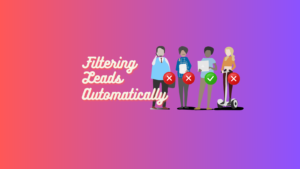In the fast-paced world of customer service, providing an exceptional customer experience is key to retaining loyal clients and attracting new ones. With the advent of technology, businesses are continually seeking innovative ways to enhance customer support. One such innovation that has gained significant attention in recent years is the use of chatbots in customer support. In this article, we’ll explore how integrating a customer support chatbot can elevate your business’s customer experience.
Understanding Customer Experience
Before delving into the world of chatbots, it’s crucial to understand what customer experience (CX) truly means. Customer experience encompasses every interaction a customer has with your business, from the first touchpoint to the final purchase and beyond. It’s not limited to the product or service itself but also includes the quality of support and engagement a customer receives.
Delivering exceptional customer experiences is more critical than ever because satisfied customers are more likely to become brand advocates and repeat customers. According to a survey by PwC, 73% of consumers point to customer experience as an essential factor in their purchasing decisions.
The Role of Customer Support in CX
Customer support plays a pivotal role in shaping CX. It’s the bridge that connects customers with your business. When customers encounter issues or have questions, they expect swift and helpful responses. Failing to meet these expectations can lead to dissatisfaction and potentially drive them away. This is where chatbots come into play.
The Rise of Chatbots
Over the past few years, chatbots have emerged as a game-changer in the realm of customer support. Chatbots are AI-powered software that can engage with customers in real-time, providing instant responses and solutions to their queries. They are available 24/7, ensuring that customers can get help whenever they need it.
The rise of chatbots is not just a trend; it’s a significant shift in how businesses handle customer support. Research by Gartner predicts that by 2023, over 60% of customer service engagements will be handled by AI, including chatbots, up from 30% in 2017.
Benefits of Using Chatbots
The adoption of chatbots in customer support offers several advantages. Here are some of the key benefits:
1. Efficiency
Chatbots can handle a large volume of inquiries simultaneously, reducing customer wait times and ensuring swift responses.
2. Cost-Effectiveness
They can significantly cut support costs by automating routine tasks, allowing your human agents to focus on more complex issues.
3. 24/7 Availability
Chatbots work round the clock, ensuring that customers in different time zones or with urgent inquiries are never left waiting.
4. Consistency
Chatbots provide consistent responses, ensuring that all customers receive the same level of service quality.
5. Data Collection
They can collect valuable customer data and insights, helping businesses understand their customers better.
Personalization in Customer Support
One of the significant advancements in chatbot technology is the ability to deliver personalized experiences. Chatbots can analyze user data and tailor responses based on individual preferences and behaviors. This personalization not only enhances the customer experience but also makes customers feel valued and understood.
For instance, a chatbot can remember a customer’s previous interactions and suggest products or services based on their history, creating a sense of continuity and care.
Improving Customer Engagement
Chatbots aren’t just automated responders; they can actively engage with customers. They can initiate conversations, ask for feedback, and provide proactive support. For example, a chatbot can send a follow-up message after a purchase, asking if the customer is satisfied or needs any further assistance. This proactive approach can lead to increased customer loyalty and satisfaction.
Overcoming Common Concerns
While chatbots offer numerous benefits, some businesses may have concerns about their implementation. Common concerns include:
1. Lack of Human Touch
Businesses worry that chatbots may come across as impersonal. However, chatbots can be programmed to use a friendly and conversational tone to maintain a human touch.
2. Complex Queries
Some believe that chatbots can’t handle complex customer queries. In reality, chatbots are continually improving in their ability to understand and respond to intricate issues. For more complex problems, they can seamlessly transfer the conversation to a human agent.
3. Initial Setup
Setting up a chatbot system might seem challenging, but many user-friendly platforms are available. The initial effort invested in configuring your chatbot can pay off in terms of improved customer support and satisfaction.
Implementing a Chatbot Strategy
Now that we’ve explored the advantages and addressed concerns, let’s discuss how to implement a chatbot strategy for your business:
1. Define Objectives
Determine your specific goals for the chatbot, whether it’s reducing response times, handling routine inquiries, or collecting customer data.
2. Select the Right Software
Choose a chatbot platform that suits your business needs. Ensure it integrates well with your existing systems and can be customized to match your brand’s tone and style.
3. Training
Train your chatbot to handle common customer queries. Provide it with a robust knowledge base to draw from.
4. Testing
Before launching, thoroughly test the chatbot to identify and rectify any issues or inconsistencies in responses.
5. Monitoring and Improvement
Continuously monitor the chatbot’s performance, gather user feedback, and make improvements to enhance its effectiveness.
6. Integration with Human Support
Design a system where the chatbot seamlessly hands off conversations to human agents when needed.
Measuring Success
To ensure that your chatbot strategy is delivering the desired results, it’s essential to measure its impact. Key performance indicators (KPIs) for your chatbot might include:
1. Response Time
Measure the average response time for chatbot interactions, aiming for faster resolutions.
2. Customer Satisfaction
Collect feedback from customers about their chatbot experiences and use this data to make improvements.
3. Task Completion Rate
Track the percentage of queries or tasks that the chatbot successfully handles without human intervention.
4. Cost Savings
Evaluate how much you save in customer support costs by using chatbots.
In conclusion, integrating a customer support chatbot into your business strategy can be a game-changer for enhancing customer experience. Chatbots offer efficiency, cost-effectiveness, and the ability to provide personalized, 24/7 support. By addressing common concerns and following a well-structured implementation strategy, you can harness the full potential of chatbots to meet your customer’s needs and drive business growth.
With the rise of chatbots and their proven benefits, it’s clear that investing in this technology can be a significant step towards ensuring your business’s long-term success in delivering exceptional customer experiences.
Ready to take your customer experience to the next level? Don’t wait! Embrace the power of chatbots and watch your business thrive. Contact us today to learn more about how our customer support chatbot solution can transform your customer interactions.





